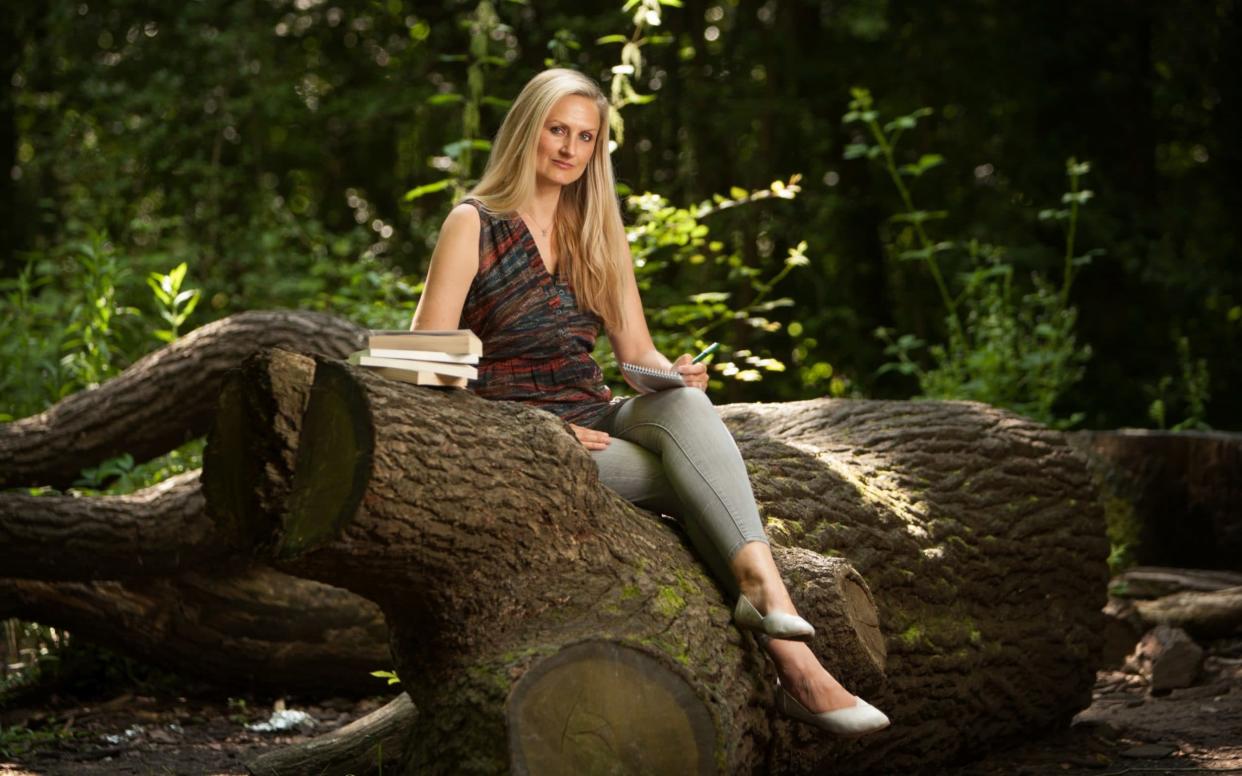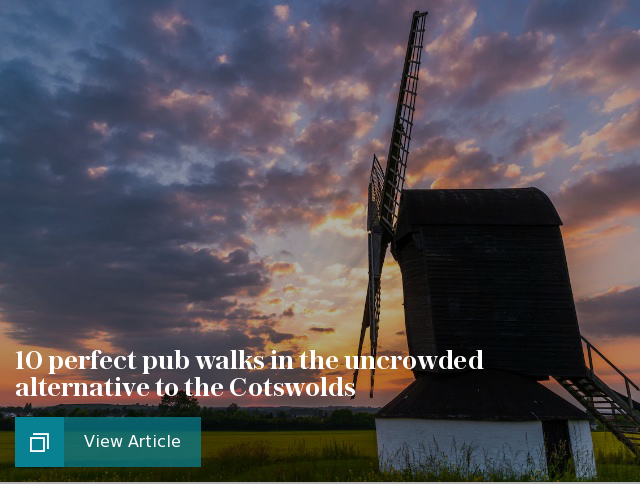'Forest bathing' makes sense (even if the name might be daft)

With the rain finally set to clear, this (very) long awaited spring presents a prime opportunity to get the family off their screens and in to the great outdoors. If your teens resist, tell them it’s their chance to embrace the latest pretentious wellness trend: forest bathing.
Bear with me. Yes, the benefits of a walk in the woods may be so commonsensical that it seems nonsensical to give the activity a trendy new name (not least, now various forest bathing clubs and training schools have started sweeping the most fashionable parts of the United States).
But the premise of this alternative therapy is sound enough to have been introduced as part of a public health programme in Japan in 1982, when the forestry ministry coined the phrase shinrin-yoku to turn it into a national pastime that would enhance health, wellness, and happiness.
Over eight years, Japanese officials spent millions studying the physiological and psychological effects of shinrin-yoku, which showed positive effects on immunity, blood pressure and stress levels that could last up to a month following each ‘bath’ in the woods – leading them to designate 48 therapy trails across the country specifically for the purpose.
The benefits, some have suggested, are due to various essential oils, generally called phytoncide, which trees emit to protect themselves from germs and insects. Forest air doesn’t just feel fresher and better, inhaling phytoncide appears to actually improve immune system function and decrease levels of the stress hormone, cortisol.

If we can all get behind the principle that spending more time in nature is good for both body and soul, then giving it a name – however daft – turns it into a practice. Like yoga, meditation, prayer, working out, and many other worthy endeavours, developing a meaningful relationship with nature takes time, and is deepened by returning again and again throughout the cycles of the seasons.
Unlike recent years’ biggest wellness trend, hygge – the Danish definition of cosy contentment, which was used to flog any number of books, scented candles and cashmere socks – forest bathing (or tree-hyggeing, if you will) requires no special equipment.
Positive effects on immunity, blood pressure and stress levels could last up to a month following each ‘bath’ in the woods
In fact, it’s better if you leave your Fitbit behind. The point is to go out with a specific intention to connect with nature with all your senses, and actively interact with the land, whether a city park or country forest.
There is no distance marker to tick off, no pedometer to check, but the longer one devotes to it, the more beneficial a relationship can be built.
This movement could not come at a better time, with many of us suffering from what has been dubbed Nature Deficit Disorder (NDD). The term was devised by Richard Louv, an American author and co-founder of the Children and Nature Network, who has analysed the negative health effects of alienation from the great outdoors.

You won’t get a medical diagnosis for NDD, and doctors can’t prescribe a hike and a swim in a waterfall, but Louv has identified many shared symptoms between NDD sufferers – lack of concentration, lethargy and low moods – and those of the now widely-acknowledged problem of Seasonal Affective Disorder (SAD), which an estimated 20 per cent of Brits feel afflicted by every winter.
But could there be more to SAD than a simple lack of sunlight? Perhaps, as Louv believes, it’s the disconnect with nature itself that makes us feel sluggish and depressed.
Perhaps it’s the disconnect with nature itself that makes us feel sluggish and depressed
If the benefits of just slowing down and stepping outside appear obvious, there’s no denying modern life has turned us into an indoor species – and it’s making us miserable. If we work outside the home, we commute and rush to the office for eight-hour days, perhaps rewarding ourselves with a soulless, uninspiring run on a treadmill afterwards, before heading back to four walls and bed. If we’re at home, parenting or working, chances are we spend more time in front of our washing machines than in our back gardens, on a hamster wheel of domesticity and to-do lists.
How tempting this new trend, then, to bathe our senses in the beauty of nature, rather than locking ourselves away in a man-made world.

I was born in Waltham Forest, the London Borough famous and protected for the woodlands in which Henry VIII and Elizabeth I used to escape the trials of the royal court, and spent much of my time stuck in mud and mushing fallen petals into perfume.
At 11, we moved out to Essex, to a house that backed onto Epping Forest, and a road – quite magically – called Sylvan Way. When I reached my twenties, I moved back to the angry, concrete beast that is London and started spending all my time commuting to grey cubicles through dirty underground tunnels. When I was feeling my most toxic and dulled, I visited an aura reader for an article. “Your aura is green but struggling with the energy around it. You need to get out into the countryside, take your shoes off, and wriggle grass beneath your toes. It will save your soul.” I ignored her, obviously. I was too busy for pastoral pleasures.
I could feel the anxiety caused by months of worrying whether I would ever be able to conceive drift away as I allowed myself to be washed in green
This changed in 2010 when, aged 34, I took time off work to travel around Asia for three months with my husband, Russell. We’d been struggling to get pregnant for about 18 months and this was a fertility tour of sorts, to de-stress and think about our options while looking after ourselves and being together.
In Indonesia, I went to Elizabeth Gilbert’s Balinese guru from Eat, Pray, Love to ask for help. He told me if I relaxed, meditated, got in touch with nature and opened a nail salon, I would have two children. Spoiler alert: I now have two children but I am not a manicurist.
But my most meaningful experience happened in Japan, a few months later, in the lush grounds of a Kyoto temple, where a local guide told me to walk through the bamboo trees in silence, stopping to smell the moss or to feel the shape of the different shaped leaves. I felt like an Asian-inspired Wordsworth, meditating as I walked the undulating path. I could feel the anxiety caused by months of worrying whether I would ever be able to conceive drift away as I allowed myself to be washed in green. It was a powerful feeling, and one I decided to try and bring home with me. 13 months later, I gave birth to my son. As a mother, tree bathing has become an even hardier part of my life.

The recommended forest bathing routine is to practise a couple of times a week, taking in the surroundings at a leisurely pace. It’s pretty standard that during a one hour ‘bath’ the walker would only cover a mile in distance. This slow but steady advocacy suits my routine as I am so often wrestling young children at the same time. I try to incorporate another natural de-stressor into our twice-weekly walks: dawdling alongside a river or aiming towards a lake. The combination of greenery and water, after a day at a desk, truly refreshes the eyeballs. I put my phone away, take purposeful breaths and stop to admire the view.
A shocking survey of 1,200 parents of five to 12 year-olds from 10 countries found that British children were among the most housebound in the world
Recently, a shocking survey of 1,200 parents of five to 12 year-olds from 10 countries found that British children were among the most housebound in the world, spending twice as much time on screens inside as they do playing outside. Inspired by Mother Nature - and scared to ignore her - thankfully William, six, and Matilda, four, can be persuaded to choose the outdoors even when the pull towards the television is great.
My son and his friends play in the forest behind his school every afternoon, year round, sticks turning into swords and guitars and wizards’ wands in their chubby, sweaty hands. My daughter’s trickier moments can be quietened by a waft of lavender, the flutter of a Red Admiral’s wing.
Taking a tree bath – even if you never call it anything other than a walk in the woods – really can be the best medicine.
Forest Therapy by Sarah Ivens is published by Little Brown (£12.99). To order for £10.99 plus p&p, call 0844 871 1514 or visit books.telegraph.co.uk


